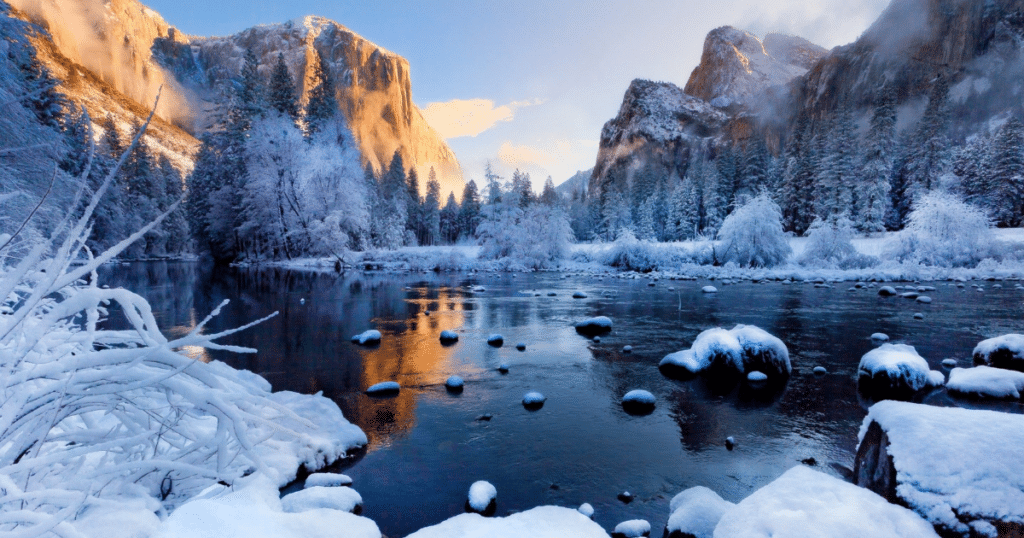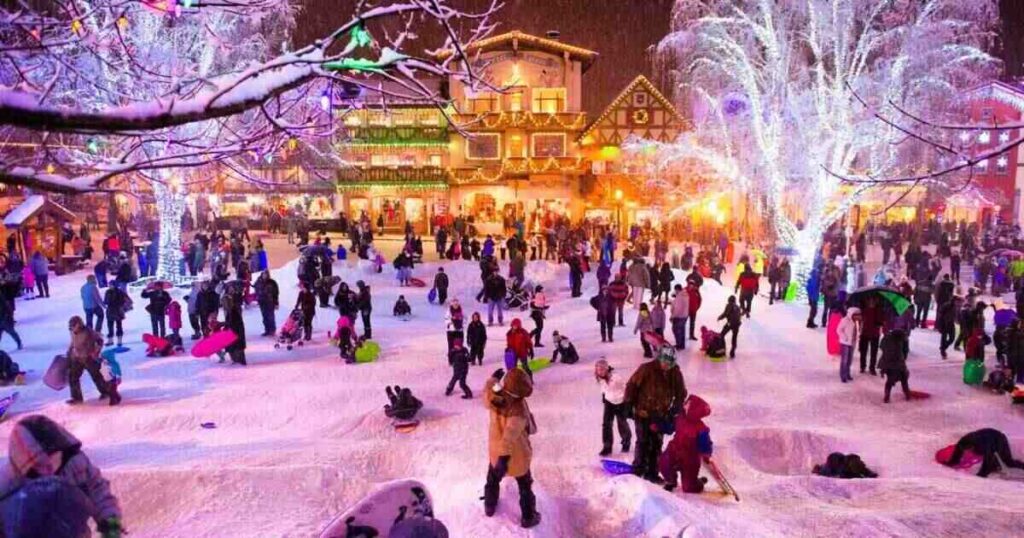Winter, that frosty season that blankets much of the world in white, carries a wealth of meaning beyond just cold temperatures and snowy landscapes. From the quiet whispers of falling snow to the raucous celebrations that light up the darkest nights, winter symbolism spans cultures, religions, and philosophies worldwide.
Let’s embark on a journey to explore the rich tapestry of winter meaning and discover how this chilly season has shaped human thought and tradition throughout history.
Urdu poetry began in the Indian subcontinent. It emerged in the 13th century. This period saw the blending of various cultures. The region was a melting pot of languages and traditions. Urdu poetry flourished during the Mughal Empire. The emperors patronized poets and artists. They created a fertile ground for poetic expression. Urdu poetry was born from this cultural fusion.
Winter Symbolism And Meaning Around The World
Winter’s icy grip touches every corner of the globe, leaving its mark on cultures far and wide. The cold season symbols we associate with winter often transcend borders, speaking to universal human experiences. From the stark beauty of bare trees to the warm glow of a fireplace, these symbols resonate with people across continents.
Yet, as we dig deeper, we find that winter’s meaning shifts and changes like snowdrifts in the wind. What might represent hardship and endurance in one culture could symbolize rebirth and renewal in another. This diversity of interpretation adds depth to our understanding of winter, reminding us that even in the coldest months, human creativity and resilience shine bright.
Popular Winter Symbolism Around The World
Silence
The hush that falls over a snow-covered landscape is one of winter’s most profound gifts. This silence isn’t just the absence of sound; it’s a presence all its own. In many cultures, winter’s quiet is seen as an invitation to turn inward, to reflect and rejuvenate.
Think of a forest after a heavy snowfall. The muffled crunch of your footsteps might be the only sound for miles. This stillness creates a space for contemplation that’s hard to find in the busier seasons.
It’s no wonder that many writers and artists have found inspiration in winter’s silent embrace, using it as a metaphor for peace, solitude, and the quiet strength that comes from within.
Endings and Death
Winter often symbolizes the end of life’s cycle, a time when nature seems to hold its breath. Trees stand bare, fields lie fallow, and many animals retreat into hibernation. This association with endings and death isn’t necessarily gloomy
In literature and art, winter frequently represents the twilight of life or the end of an era. It reminds us of our own mortality, encouraging us to appreciate the present and prepare for the future. Just as deciduous trees shed their leaves to conserve energy, winter teaches us the value of letting go and the strength found in stillness.
Rebirth and Renewal

Paradoxically, within winter’s symbolism of endings lies the promise of new beginnings. The seasonal changes from autumn to winter, and then to spring, mirror the cycle of death and rebirth that’s central to many belief systems. Winter, in this context, becomes a time of gestation, where new life quietly prepares to burst forth.
Consider the seeds that lie dormant beneath the snow, or the bear cubs born in their mother’s winter den. These hidden signs of life remind us that even in the darkest times, hope and potential for growth remain. Many cultures celebrate this aspect of winter, seeing it as a time to plant the seeds of future success and personal growth.
Purity and Innocence
The pristine white of freshly fallen snow often symbolizes purity and innocence in various cultures. This association taps into our innate appreciation for unspoiled beauty and the idea of a clean slate. A snow covered landscape can feel like a blank canvas, inviting us to start anew.
In art and literature, winter scenes often evoke a sense of childlike wonder and innocence. Think of the joy of making the first footprints in fresh snow or the simple pleasure of catching snowflakes on your tongue. These experiences connect us to a sense of purity that can be hard to find in our everyday lives.
Read More About : Goat Symbolism & Meaning: The Ultimate Guide
Transitions
Winter serves as a powerful symbol of transition, bridging the old year and the new. The seasonal shifts we experience during winter remind us that change is a constant in life, and that periods of apparent stagnation often precede times of growth and renewal.

Many cultures mark important transitions during the winter. From the Western New Year celebrations to the Chinese Spring Festival, winter is seen as a time to reflect on the past and set intentions for the future. These traditions acknowledge winter’s role as a transitional season, helping us navigate the sometimes challenging journey.
Festivity
Despite (or perhaps because of) its harsh conditions, winter is a time of joyous celebration in many cultures. Winter festivals light up the darkest months with warmth, community, and hope. These celebrations often revolve around themes of light conquering darkness, mirroring the gradual lengthening of days after the winter solstice.

From Christmas markets in Europe to Diwali in India, winter festivities bring people together, fostering a sense of community and shared joy. These cultural festivals remind us of our resilience in the face of adversity and our ability to find light even in the darkest times.
Dark Night of the Soul
Winter’s long nights and challenging conditions have long been associated with periods of spiritual darkness and inner struggle. The concept of the “Dark Night of the Soul,” popularized by the 16th-century mystic St. John of the Cross, uses winter imagery to describe a profound spiritual crisis that ultimately leads to enlightenment.
This symbolism resonates beyond religious contexts, speaking to anyone who has faced personal challenges or periods of deep introspection. Winter, in this sense, represents a time of trial that, when weathered with courage and perseverance, can lead to profound personal growth and spiritual awakening.
Iconic Objects in Winter
Winter’s symbolism is often embodied in tangible objects that have come to represent the season. These icons carry deep cultural significance and evoke the essence of winter in our collective imagination. Here’s a table showcasing some of these iconic winter symbols:
| Object | Symbolism | Cultural Significance |
| Snowflake | Uniqueness, fragility, beauty | Celebrated in art and science for its intricate patterns |
| Evergreen Tree | Resilience, eternal life | Central to Christmas traditions in many cultures |
| Candle | Light in darkness, hope | Used in various winter festivals, including Hanukkah and Advent |
| Fireplace | Warmth, home, community | Gathering place for families and friends during cold months |
| Mittens/Gloves | Protection, care | Often associated with charity and giving in winter months |
| Ice Skates | Joy, freedom | Symbolize winter recreation and the ability to glide through challenges |
| Hot Cocoa | Comfort, indulgence | Represents the simple pleasures that make winter enjoyable |
These objects do more than just represent winter; they embody the season’s spirit, from its challenges to its joys. They remind us of the many facets of winter and how it touches our lives in both practical and symbolic ways.
Read More About : Scorpion Symbolism in Cultures and Arts Around The World
Winter Festivals In Different Religions and Cultures
Winter’s chill brings with it a flurry of festivals and celebrations across the globe. These winter rituals not only brighten the darkest months but also offer insight into how different cultures interpret and honor the season. Let’s take a whirlwind tour of some notable winter festivals:
Christmas, celebrated by Christians worldwide, marks the birth of Jesus Christ. It’s a time of joy, giving, and family gatherings. The tradition of decorating evergreen trees symbolizes eternal life, while the exchange of gifts recalls the offerings of the Magi.
Hanukkah, the Jewish Festival of Lights, commemorates the rededication of the Second Temple in Jerusalem. For eight nights, candles are lit on a menorah, symbolizing the miracle of oil that burned for eight days when there was only enough for one.
In Norse traditions, Yule celebrated the winter solstice. This 12-day festival honored the god Odin and celebrated the gradual return of the sun. Many modern Christmas traditions, such as the Yule log, have roots in these ancient celebrations.
Dongzhi, the winter solstice festival in China, marks the return of longer days and increasing positive energy in the Chinese philosophy of yin and yang. Families gather to eat tangyuan, sweet rice balls that symbolize reunion and harmony.
These festivals, each unique in its traditions and meanings, share common themes of light, renewal, and community. They remind us that even in the depths of winter, there’s warmth to be found in our shared humanity and cultural heritage.
Winter Symbolism in Norse Mythology
The harsh winters of Scandinavia left an indelible mark on Norse mythology, infusing it with powerful winter symbolism. Central to this is the concept of Fimbulwinter, a terrible winter that precedes Ragnarök, the end of the world. This mythical winter, lasting three years without summer, represents the ultimate trial, testing the strength and resilience of both gods and humans.
In Norse mythology tales, winter is often personified by fearsome jötnar (giants) like Skadi, the goddess of winter and mountains. These beings embody the dangerous beauty and raw power of winter, respected and feared in equal measure. The god Ullr, associated with winter, hunting, and skiing, shows a more positive side of the season, highlighting the skills and activities that allowed people to not just survive but thrive in harsh conditions.
Winter Symbolism in Greek Mythology
Greek mythology, despite originating in a warmer climate, also grapples with winter’s symbolism through the myth of Persephone. Daughter of Demeter, goddess of agriculture, Persephone is abducted by Hades, god of the underworld. Her time in the underworld corresponds to the barren months of winter, while her return brings the renewal of spring.

This myth beautifully encapsulates the cycle of seasonal changes, explaining winter as a time of loss and dormancy. It speaks to the human experience of enduring difficult times with the hope of better days to come. The Greeks saw in winter not just hardship, but also the necessary prelude to renewal and abundance.
Winter Symbolism in China
In Chinese philosophy, winter is deeply intertwined with the concept of yin and yang. Winter represents the height of yin energy – cool, dark, and inward-focused. This is seen not as a negative state, but as a necessary balance to the yang energy of summer. The Chinese beliefs around winter emphasize the importance of rest, reflection, and conservation of energy.
The Chinese lunar calendar marks the beginning of spring during what many Western cultures would still consider winter. This perspective highlights the Chinese view of winter as a time of preparation and hidden growth. Winter is seen as a crucial time for self-improvement and personal development. Laying the groundwork for the burst of activity in spring.
As we’ve journeyed through the rich tapestry of winter symbolism around the world. We’ve seen how this season speaks to fundamental human experiences of endings and beginnings, challenge and renewal, darkness and light. From the silent snowfields of the north to the philosophical traditions of the east, winter carries profound meaning .
Festive celebration
Whether you see winter as a time of festive celebration, quiet introspection, or challenging endurance, its symbolism offers valuable lessons. It reminds us of our resilience, our capacity for joy even in dark times. And the eternal cycle of renewal that governs both nature and our lives.
As you navigate your own winters whether literal or metaphorical remember the wisdom embedded in these global traditions. Embrace the silence for reflection, acknowledge endings as the precursor to new beginnings. Find purity in the fresh start each day offers, and celebrate the light that shines even in the darkest times.
Winter, with all its challenges and beauty, is more than just a season. It’s a teacher, a reset button, and a reminder of our shared human experience. So the next time you shiver in a cold wind or admire the sparkle of fresh snow. Take a moment to consider the deeper meanings winter holds.